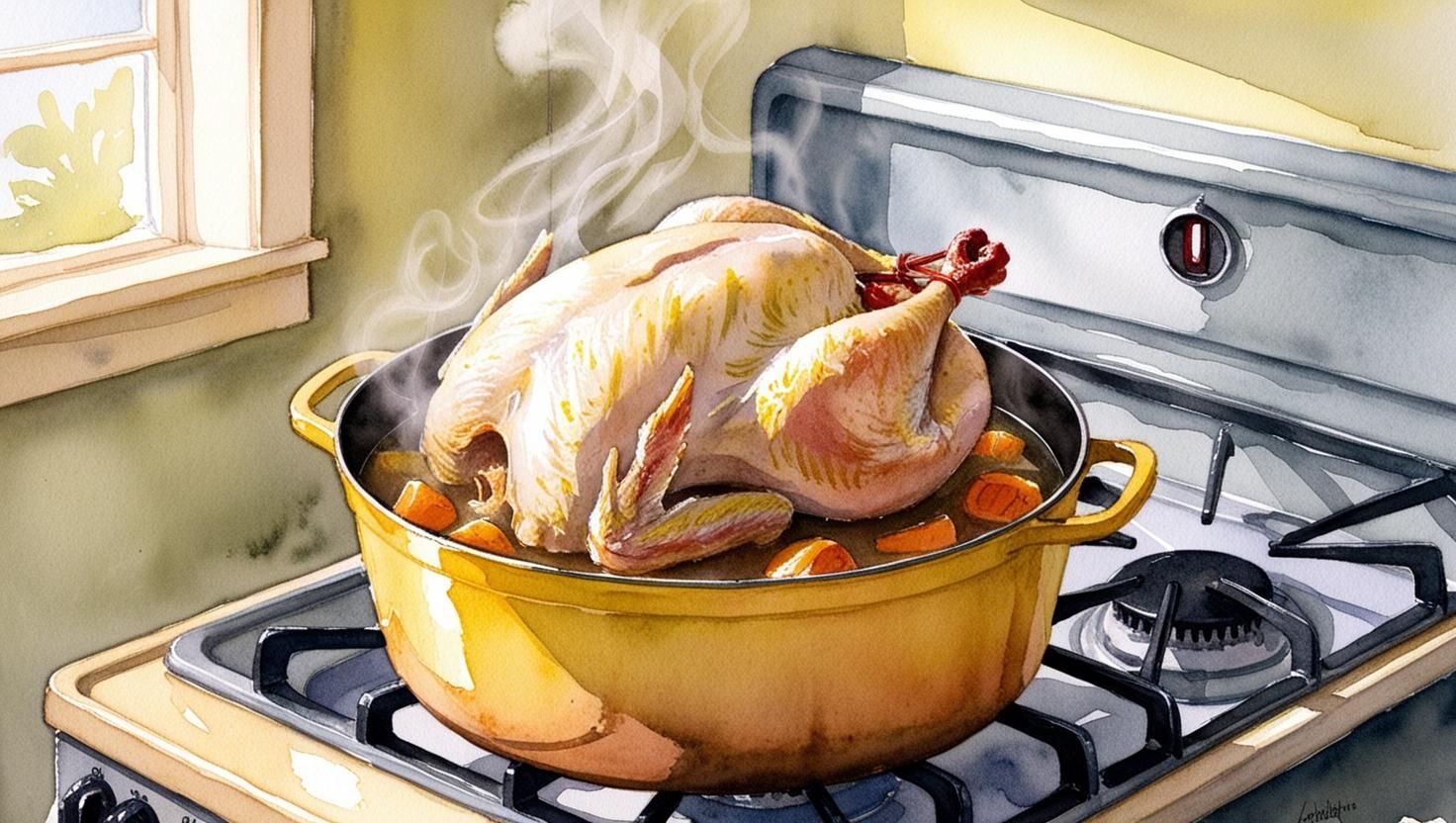By Jennifer Lundy
•
January 14, 2025
The Ultimate Budget Hack: Using a Whole Chicken for Meals and Bone Broth If you’re looking to stretch your grocery budget while maximizing nutritional value, buying a whole chicken is one of the best hacks you can implement in your meal planning. Not only does it provide multiple servings of delicious, versatile protein, but it also offers the bonus of making nutrient-dense bone broth, which can be used in future meals. Whether you’re feeding a family or meal-prepping for yourself, this simple approach wi ll help you save money and eat healthier. Why Choose a Whole Chicken? Whole chickens are incredibly affordable compared to buying individual cuts of meat, and they provide much more than just a meal for the day. A whole chicken is a versatile ingredient that can be roasted, grilled, or slow-cooked, and it can be used in a wide variety of dishes, from salads and soups to tacos and pasta. Step #1: Roast or Cook the Whole Chicken The first step is to cook your whole chicken. Roasting in the oven is the most common method, but slow-cooking or pressure cooking (e.g., in an Instant Pot) are great alternatives that preserve moisture and tenderness while making the meat easy to shred. Simple Roasted Chicken Recipe: Preheat your oven to 425°F (220°C). Rub the chicken with olive oil, salt, pepper, and your favorite herbs or spices. Roast for about 1 to 1.5 hours, depending on the size of the chicken (an internal temperature of 165°F ensures it’s fully cooked). Let it rest for 10-15 minutes before carving. Once your chicken is cooked, divide it into portions. You can use the meat in salads, sandwiches, tacos, stir-fries, or soups, depending on what you have planned for the week. Aim to keep some of the cooked chicken for later meals, and don’t forget to save the skin and bones for the next step! Step #2: Use Leftover Meat for Other Dishes The beauty of a whole chicken lies in its ability to feed you for several meals. Here are a few ideas to use up the leftover chicken: Chicken Salad: Combine the shredded chicken with mayonnaise or Greek yogurt, add some diced veggies, nuts, and seasonings for a quick and healthy salad. Chicken Tacos: Heat up the shredded chicken with taco seasoning and serve in tortillas with your favorite toppings. Chicken Soup or Stew: Add the chicken to a simple vegetable or noodle soup for a warming meal. Chicken Stir-Fry: Toss the chicken with veggies and soy sauce for an easy, flavorful stir-fry. By repurposing the leftover chicken into different dishes, you'll ensure that you're getting the most out of that single bird. Bonus Hack: Make Bone Broth Once you’ve enjoyed your chicken, don’t throw away the bones! This is where the magic happens: you can turn them into a rich, flavorful bone broth that will become the base for future soups, stews, sauces, and even risottos. How to Make Bone Broth from a Whole Chicken: Gather the Bones: After you've removed all the edible meat, place the leftover bones, skin, and any cartilage into a large pot or slow cooker. Add Vegetables and Aromatics: Add a couple of onions (quarter them with the skins on), a few garlic cloves (smash them with the skin on), a couple of carrots, and celery stalks. You can also throw in herbs like thyme, rosemary, or parsley, and add a splash of apple cider vinegar (about 2 tablespoons) to help break down the collagen and release nutrients from the bones. Cover with Water: Fill the pot with water, just enough to cover the bones and vegetables. Simmer: Bring the water to a boil, then reduce the heat and let it simmer for at least 4 hours, ideally up to 12 or even 24 hours if you’re using a slow cooker. The longer it cooks, the richer the broth will be. Skim any foam or impurities that rise to the surface during the first hour of cooking. Strain and Store: After simmering, strain the broth through a fine mesh sieve or cheesecloth to remove the solids. Let the broth cool and store it in jars or containers in the fridge for up to a week or freeze it for later use. Bone broth is packed with collagen, gelatin, and essential amino acids, making it a powerful addition to your diet. It's great for gut health, skin, joints, and overall immunity. Why Bone Broth Is a Game-Changer Making bone broth is not just a way to use up leftovers—it’s also an incredibly nutrient-dense food that can improve your overall health. Bone broth provides: Collagen and Gelatin: Great for skin elasticity, joint health, and digestive support. Minerals: Especially calcium, magnesium, and phosphorus, which are important for bone health. Amino Acids: Including proline and glycine, which help with protein synthesis and support the liver in detoxification. Incorporating bone broth into your meals is an easy way to boost the nutritional profile of soups, sauces, or even to sip on as a warm, comforting drink on a chilly day. How to Use Bone Broth Here are a few ideas for using your homemade bone broth: Soups & Stews: Use it as the base for all kinds of soups and stews. Add veggies, grains, and any leftover protein for a hearty meal. Cooking Grains: Use bone broth instead of water to cook rice, quinoa, or couscous for added flavor and nutrients. Sauces & Gravies: Make richer, more flavorful sauces by using bone broth as a base. It’s great for gravies or pan sauces for meats. Sip it: For a quick, nutrient-packed snack, just heat up a cup of bone broth and sip it like a warm drink. Conclusion By purchasing a whole chicken, you’re not just getting one meal—you’re setting yourself up for multiple, nutrient-dense meals. Whether you’re enjoying roast chicken for dinner, repurposing leftovers into new dishes, or making a batch of homemade bone broth, you’re making the most of your food, your money, and your time. This approach is a fantastic way to eat well on a budget while prioritizing nutrition. So next time you're at the store, grab a whole chicken and start planning your meals—your body (and your wallet) will thank you












